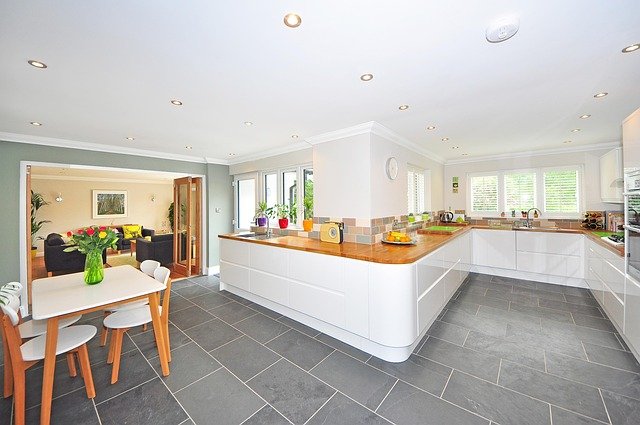The Art of Layered Lighting in Kitchen and Dining Spaces
Kitchen and dining areas are the heart of any home, serving as gathering spaces for families and friends to share meals, conversations, and create lasting memories. One often overlooked aspect of these spaces is lighting, which plays a crucial role in setting the mood, enhancing functionality, and showcasing design elements. Layered lighting, a sophisticated approach to illumination, has gained popularity in recent years for its ability to transform kitchens and dining rooms into versatile, inviting environments. By combining different types of light sources at various levels, homeowners can create a dynamic atmosphere that adapts to different activities and times of day. This article explores the concept of layered lighting, its benefits, and how to implement it effectively in kitchen and dining spaces.

The Fundamentals of Layered Lighting
Layered lighting is a design technique that involves using multiple light sources to create a balanced and functional illumination scheme. In kitchen and dining areas, this typically includes three main layers: ambient, task, and accent lighting. Ambient lighting provides overall illumination, task lighting focuses on specific work areas, and accent lighting highlights architectural features or decorative elements. By carefully combining these layers, homeowners can create a space that is both practical and aesthetically pleasing.
Ambient Lighting: Setting the Foundation
Ambient lighting serves as the base layer of illumination in a kitchen or dining room. It provides general, overall light that allows for safe navigation and basic activities. Common sources of ambient lighting include:
-
Ceiling-mounted fixtures: Chandeliers, pendant lights, or flush-mount fixtures
-
Recessed lighting: Evenly spaced can lights that provide uniform illumination
-
Cove lighting: Hidden LED strips that wash light across the ceiling
-
Natural light: Large windows or skylights that allow daylight to flood the space
When selecting ambient lighting, consider the size of the room, ceiling height, and overall design aesthetic. Dimmers are essential for ambient lighting, allowing you to adjust the intensity based on the time of day or desired atmosphere.
Task Lighting: Illuminating Work Areas
Task lighting is crucial in kitchens, where precise illumination is needed for food preparation, cooking, and cleaning. In dining rooms, task lighting can be used to highlight place settings or buffet areas. Some effective task lighting options include:
-
Under-cabinet lighting: LED strips or puck lights that illuminate countertops
-
Pendant lights: Hung over islands or dining tables to provide focused light
-
Adjustable track lighting: Flexible fixtures that can be directed to specific areas
-
Swing-arm or gooseneck lamps: Ideal for illuminating buffet tables or sideboards
When implementing task lighting, pay attention to the color temperature of the bulbs. Cooler temperatures (4000K-6500K) are best for task areas, as they enhance visibility and reduce eye strain.
Accent Lighting: Adding Drama and Depth
Accent lighting is the final layer that brings personality and visual interest to kitchen and dining spaces. It can be used to highlight architectural features, artwork, or decorative objects. Popular accent lighting techniques include:
-
Picture lights: Wall-mounted fixtures that illuminate artwork or photographs
-
Cabinet lighting: Interior lights that showcase glassware or collectibles
-
Toe kick lighting: LED strips installed under cabinets to create a floating effect
-
Uplighting: Fixtures placed on the floor to wash light up walls or columns
Accent lighting should be subtle and used sparingly to avoid overwhelming the space. Aim for a balance between highlighting key features and maintaining a cohesive overall look.
Color Temperature and Dimming: Fine-Tuning the Atmosphere
The color temperature of light plays a significant role in the ambiance of a space. Measured in Kelvin (K), color temperature ranges from warm (2700K-3000K) to cool (4000K-6500K). In kitchen and dining areas, a mix of color temperatures can be beneficial:
-
Warm light (2700K-3000K): Ideal for ambient and accent lighting, creating a cozy atmosphere
-
Neutral light (3500K): Suitable for general task lighting
-
Cool light (4000K-5000K): Best for detailed tasks in food preparation areas
Incorporating dimmers for each lighting layer allows for ultimate flexibility. Bright, cool light can be used during food preparation, while warm, dimmed light creates an intimate setting for dining or entertaining.
Smart Lighting Systems: The Future of Layered Lighting
As technology advances, smart lighting systems are becoming increasingly popular in kitchen and dining room design. These systems offer unprecedented control over layered lighting schemes, allowing homeowners to:
-
Create custom lighting scenes for different activities or moods
-
Adjust color temperature throughout the day to mimic natural light patterns
-
Control lighting remotely via smartphone apps or voice commands
-
Integrate lighting with other smart home systems for seamless automation
While smart lighting systems require a larger initial investment, they offer long-term benefits in terms of energy efficiency, convenience, and customization.
Balancing Form and Function in Lighting Design
When implementing layered lighting in kitchen and dining spaces, it’s essential to strike a balance between aesthetics and functionality. Consider the following tips:
-
Choose fixtures that complement the overall design style of the space
-
Ensure that task lighting is positioned to avoid glare and shadows
-
Use a mix of direct and indirect lighting to create depth and dimension
-
Consider the scale of fixtures in relation to the room size and furniture
-
Incorporate natural light whenever possible to enhance the overall lighting scheme
By carefully considering these factors, homeowners can create a layered lighting design that not only illuminates the space effectively but also enhances its visual appeal and functionality.
In conclusion, layered lighting is a powerful tool for transforming kitchen and dining spaces into versatile, inviting environments. By combining ambient, task, and accent lighting with thoughtful consideration of color temperature and dimming capabilities, homeowners can create a dynamic atmosphere that adapts to various activities and moods. As smart lighting technology continues to evolve, the possibilities for customization and control will only expand, making layered lighting an essential aspect of modern kitchen and dining room design.






